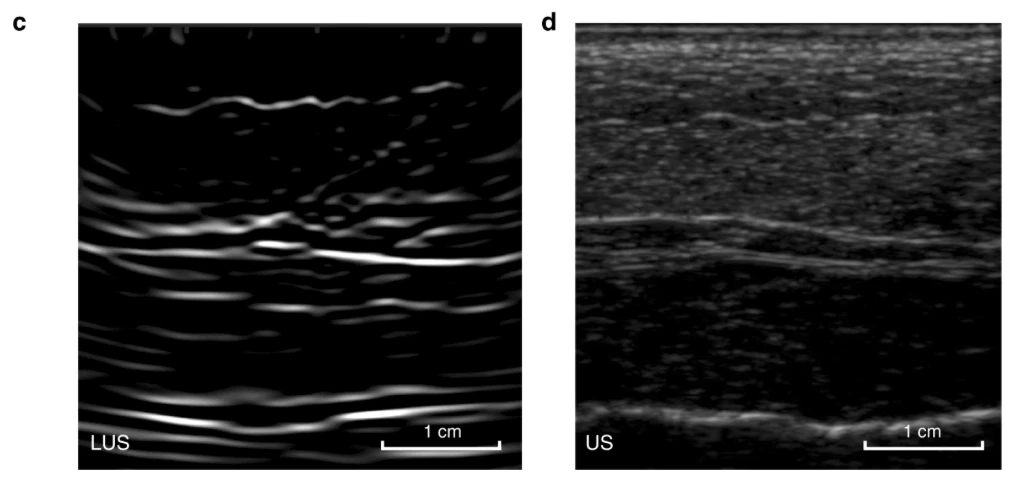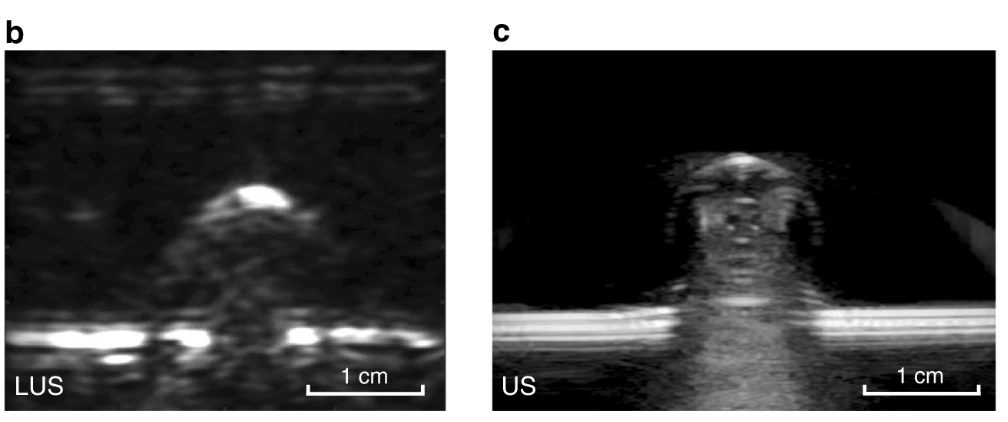Researchers from MIT have revealed the very first images of a human generated through a novel laser ultrasound imaging technique. Unlike conventional ultrasound, the new technique does not require any skin contact with the body, dramatically amplifying the range of uses for doctors in clinical environments.
A conventional ultrasound is one of the cheapest and easiest imaging methods clinicians currently have in their arsenal. Unlike X-ray or CT scans, an ultrasound does not involve harmful radiation, and unlike PET or MRI scans, there is no need for large expensive machines. Of course, ultrasound does have a number of limitations, from the need for significant bodily contact in the process of imaging, to a variability in imaging results.
A new non-contact ultrasound method involving lasers has now been effectively demonstrated by a team of researchers from MIT. The challenge in developing the new method has been figuring out a way to use a laser to produce sound waves. Traditional ultrasound uses sound waves to penetrate a human body and bounce back off different tissues. Light, of course, cannot penetrate a human body as deeply as sound.
The new method has found a laser, pulsing at a wavelength of 1,550 nanometers, can generate sound waves when it hits human skin. A second laser, tracking the same wavelength, can subsequently detect the reflected sound waves and generate a picture similar to that of a conventional ultrasound.
“It’s like we’re constantly yelling into the Grand Canyon while walking along the wall and listening at different locations,” explains senior author on the new study, Brian Anthony. “That then gives you enough data to figure out the geometry of all the things inside that the waves bounced against – and the yelling is done with a flashlight.”

In the new study, the researchers demonstrate the successful development of this novel laser ultrasound technique, from initial tests on a gelatin mold resembling human skin, to excised animal tissue. The study ultimately demonstrates the method’s efficacy in human volunteers, presenting the first non-contact laser ultrasound images of a human forearm.
At this point the method does not deliver images at resolutions equal to conventional ultrasound techniques, however, the researchers suggest this is just the first developmental milestone to be crossed. The system can potentially be refined and improved to deliver finer tissue detail.
“We’re at the beginning of what we could do with laser ultrasound,” says Anthony. “Imagine we get to a point where we can do everything ultrasound can do now, but at a distance. This gives you a whole new way of seeing organs inside the body and determining properties of deep tissue, without making contact with the patient.”

It is this ability to easily produce cheap and detailed images without physical contact that makes this laser ultrasound technique so promising. As well as removing the inconsistencies that can arise from independent operator variabilities, the non-contact method allows for a large array of patients to be imaged who otherwise couldn’t undergo traditional ultrasound. This includes babies, burn victims, or patients following surgeries who simply cannot have probes pressed on their skin.
Removing the need for an ultrasound operator, and automating the process, also allows for new portable screening devices. This presents future scenarios offering patients home screening and maintenance of conditions that otherwise required frequent clinical visits.
“I can imagine a scenario where you’re able to do this in the home,” notes Anthony. “When I get up in the morning, I can get an image of my thyroid or arteries, and can have in-home physiological imaging inside of my body. You could imagine deploying this in the ambient environment to get an understanding of your internal state.”
The new study was published in the Nature journal Light: Science and Applications.
Source: MIT




